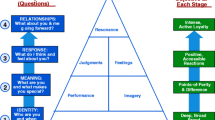Abstract
In his seminal Journal of Marketing article, entitled “Conceptualizing, Measuring, and Managing Customer-Based Brand Equity,” Kevin Keller argued persuasively that we can best understand, measure, and manage brands by understanding what consumers know about brands. In this commentary, I discuss the progress we have made in researching several areas of consumer branding, including measuring consumer brand knowledge and leveraging brands through brand extensions. Further, I identify challenges for future research in both areas, including needed developments in measuring brand association networks, researching global differences in consumer response to brand extensions, and understanding how contextual factors such as competitive environments affect brand extension success.

Similar content being viewed by others
References
Aaker, D. A., & Keller, K. L. (1990). Consumer evaluations of brand extensions. Journal of Marketing, 54(1), 27–41.
Ahluwalia, R. (2008). How far can a brand stretch? Understanding the role of self-construal. Journal of Marketing Research, 45(3), 337–350.
Bettman, J. R. (1979). An information processing theory of consumer choice. Reading: Addison-Wesley.
Boush, D. M., & Loken, B. (1991). A process-tracing study of brand extension evaluation. Journal of Marketing Research, 28(1), 16–28.
Boush, D., Shipp, S., Loken, B., Genturk, E., Crockett, S., Kennedy, E., Minshall, B., Misurell, D., Rochford, L., & Strobel, J. (1987). Affect generalization to similar and dissimilar line extensions. Psychology and Marketing, 4(3), 225–241.
Bridges, S., Keller, K. L., & Sood, S. (2000). Explanatory links and the perceived fit of brand extensions: the role of dominant parent brand associations and communication strategies. Journal of Advertising, 29(4), 1–11.
Broniarczyk, S., & Alba, J. W. (1994). The importance of the brand in brand extension. Journal of Marketing Research, 31, 214–228.
Erdem, T. (1998). An empirical analysis of umbrella branding. Journal of Marketing Research, 35(3), 339–351.
Herr, P. M., Farquhar, P. H., & Fazio, R. H. (1996). Impact of dominance and relatedness on brand extensions. Journal of Consumer Psychology, 5(2), 135–159.
John, D. R., Loken, B., Kim, K., & Monga, A. B. (2006). Brand concept maps: a methodology for identifying brand association networks. Journal of Marketing Research, 43(4), 549–563.
Keller, K. L. (1993). Conceptualizing, measuring, and managing customer-based brand-equity. Journal of Marketing, 57(1), 1–22.
Keller, K. L. (2016). Reflections on customer-based brand equity: perspectives, progress, and priorities. AMS Review. doi:10.1007/s13162-016-0078-z.
Keller, K. L., & Aaker, D. (1992). The effects of sequential introduction of brand extensions. Journal of Marketing Research, 29(1), 35–50.
Kirmani, A., Sood, S., & Bridges, S. (1999). The ownership effect in consumer responses to brand line stretches. Journal of Marketing, 63(1), 88–101.
Klink, R. R., & Smith, D. C. (2001). Threats to the external validity of brand extension research. Journal of Marketing Research, 38(3), 326–335.
Lane, V. R. (2000). The impact of ad repetition and ad content on consumer perceptions of incongruent extensions. Journal of Marketing, 64(2), 80–91.
Meyvis, T., & Janizewski, C. (2004). When are broader brands stronger brands? An accessibility perspective on the success of brand extensions. Journal of Consumer Research, 31(2), 346–357.
Milberg, S. J., Sinn, F., & Goodstein, R. C. (2010). Consumer reactions to brand extensions in a competitive context: Does fit still matter? Journal of Consumer Research, 37(3), 543–553.
Monga, A. B., & John, D. R. (2007). Cultural differences in brand extension evaluation: the influence of analytic versus holistic thinking. Journal of Consumer Research, 33(4), 529–36.
Monga, A. B., & John, D. R. (2010). What makes brands elastic? The influence of brand concepts and styles of thinking on brand extension evaluation. Journal of Marketing, 74(3), 80–92.
Ng, S., & Houston, M. (2007). Exemplars or beliefs? The impact of self-view on the nature and relative influence of brand associations. Journal of Consumer Research, 32(4), 519–529.
Park, C. W., Milberg, S., & Lawson, R. (1991). Evaluation of brand extensions: the role of product feature similarity and brand concept consistency. Journal of Consumer Research, 18(2), 185–93.
Volckner, F., & Sattler, H. (2006). Drivers of brand extension success. Journal of Marketing, 70(2), 18–34.
Yeung, W. M., & Wyer, R. S. (2005). Does loving a brand mean loving its products? The role of brand-elicited affect in brand extension evaluations. Journal of Marketing Research, 42(4), 495–506.
Yorkston, E. A., Nunes, J. C., & Matta, S. (2010). The malleable brand: the role of implicit theories in evaluating brand extensions. Journal of Marketing, 74(1), 80–93.
Zaltman, G., & Coulter, R. H. (1995). Seeing the voice of the customer: metaphor-based advertising research. Journal of Advertising Research, 35(4), 35–51.
Author information
Authors and Affiliations
Corresponding author
Rights and permissions
About this article
Cite this article
John, D.R. Customer-based strategic brand management: past progress and future challenges. AMS Rev 6, 17–22 (2016). https://doi.org/10.1007/s13162-016-0080-5
Received:
Accepted:
Published:
Issue Date:
DOI: https://doi.org/10.1007/s13162-016-0080-5




